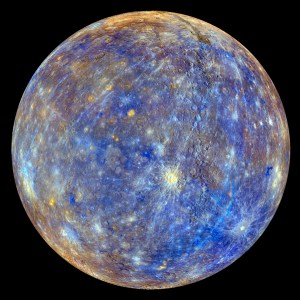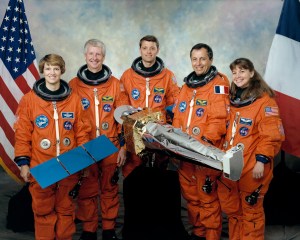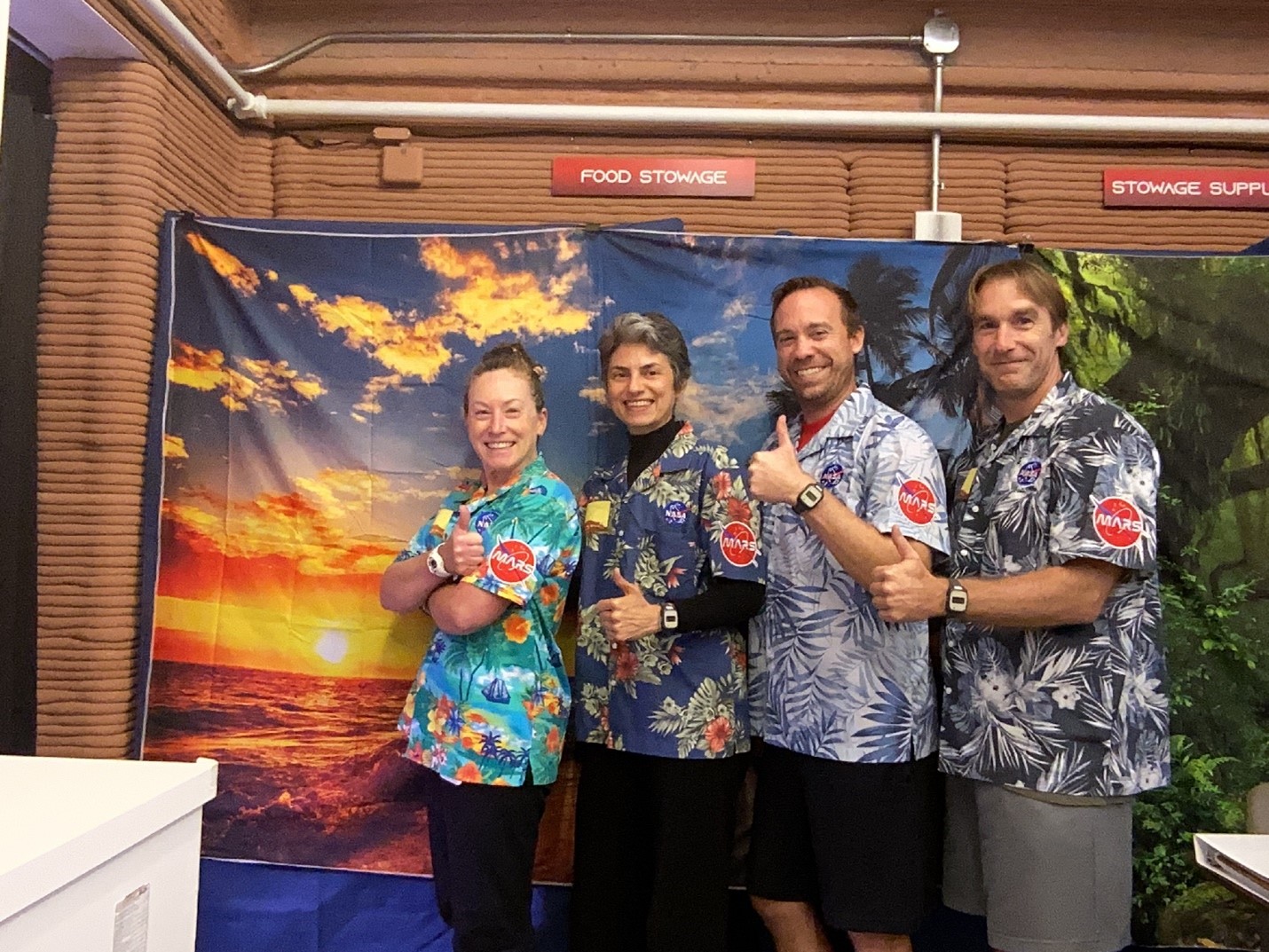Celebrating NASA’s Coast Guard Astronauts on Coast Guard Day
Each Aug. 4, Coast Guard Day commemorates the founding on Aug. 4, 1790, of the U.S. Coast Guard as the Revenue-Marine by Secretary of the Treasury Alexander Hamilton. Although considered an internal event for active duty and reserve Coast Guard members, we take the opportunity of Coast Guard Day to honor the astronauts who began […]
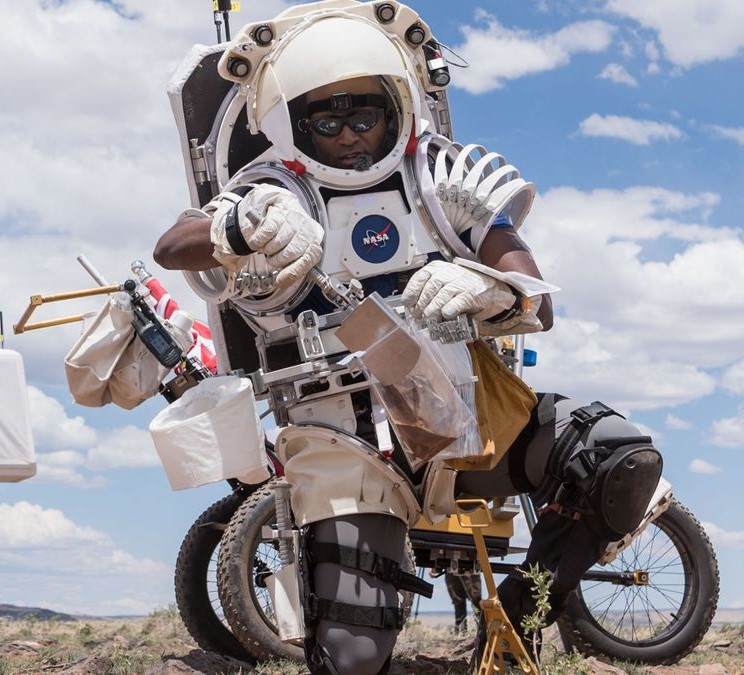
Each Aug. 4, Coast Guard Day commemorates the founding on Aug. 4, 1790, of the U.S. Coast Guard as the Revenue-Marine by Secretary of the Treasury Alexander Hamilton. Although considered an internal event for active duty and reserve Coast Guard members, we take the opportunity of Coast Guard Day to honor the astronauts who began their careers in the Coast Guard. To date, NASA has selected three astronauts who served in the Coast Guard: Bruce E. Melnick in 1987, Daniel C. Burbank in 1996, and Andre Douglas in 2021. While Melnick and Burbank have retired from NASA, the decades long relationship between the agency and the Coast Guard carries on with Douglas.
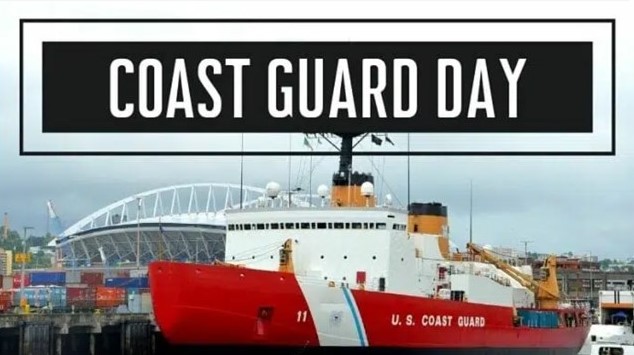
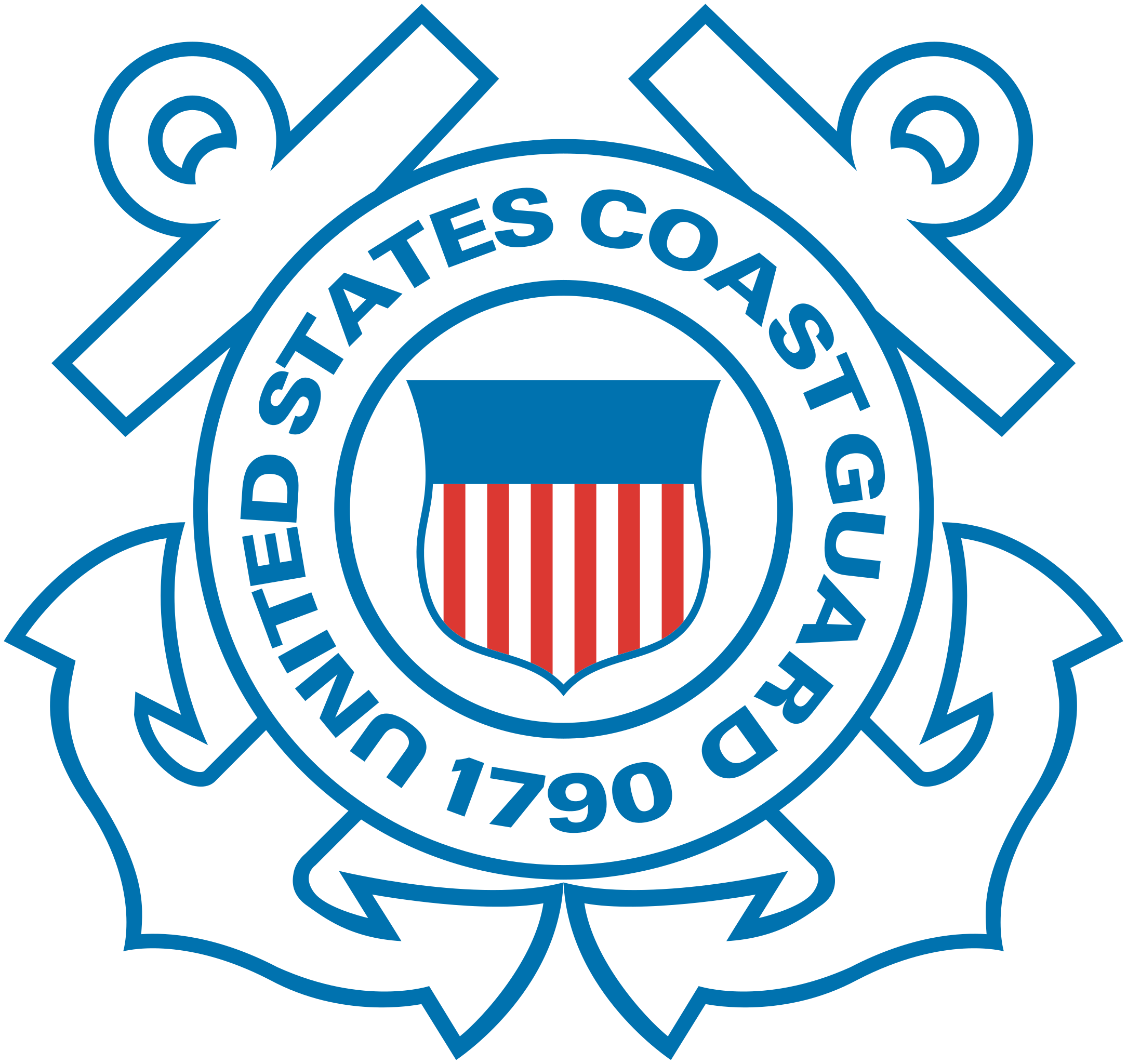
Left: Coast Guard Day banner. Image credit: courtesy Veteran.com. Right: Official emblem of the U.S. Coast Guard. Image credit: courtesy U.S. Coast Guard.
Under the guidance of Treasury Secretary Hamilton, the U.S. Congress authorized the establishment of the Revenue-Marine on Aug. 4, 1790. The bill also authorized the building of a fleet of 10 Revenue Service ships known as cutters, used to enforce tariff laws established by Congress. By the 1860s, the organization’s name had changed to the U.S. Revenue Cutter Service. On Jan. 28, 1915, President Woodrow Wilson signed into law an act of Congress that merged the Revenue Cutter Service with the U.S. Life Saving Service, naming the new organization the U.S. Coast Guard, dedicated to saving lives at sea and enforcing the nation’s maritime laws. After 177 years in the Treasury Department, the Coast Guard transferred to the newly formed Department of Transportation on April 1, 1967, and then to the Department of Homeland Security on March 1, 2003.
Bruce E. Melnick
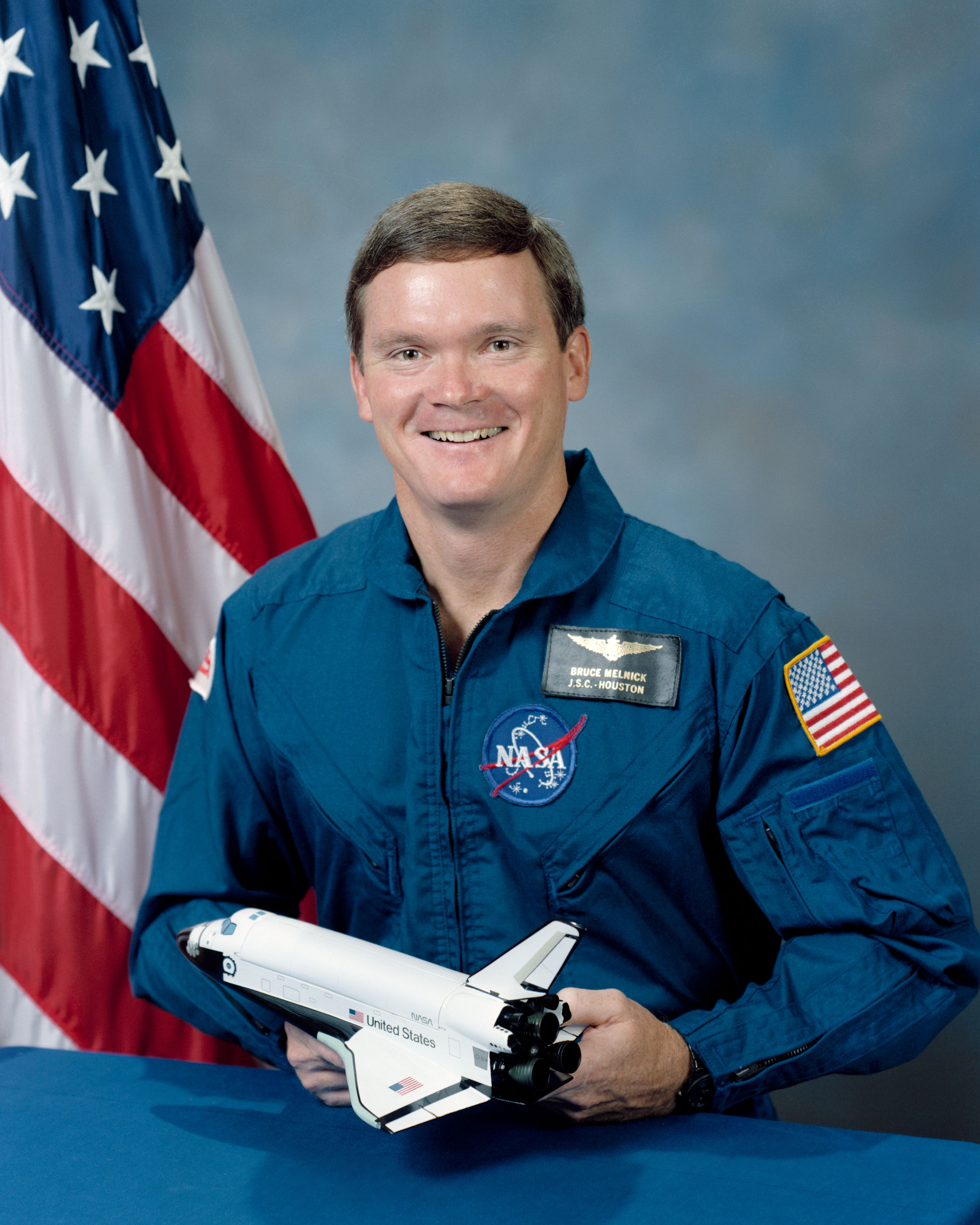
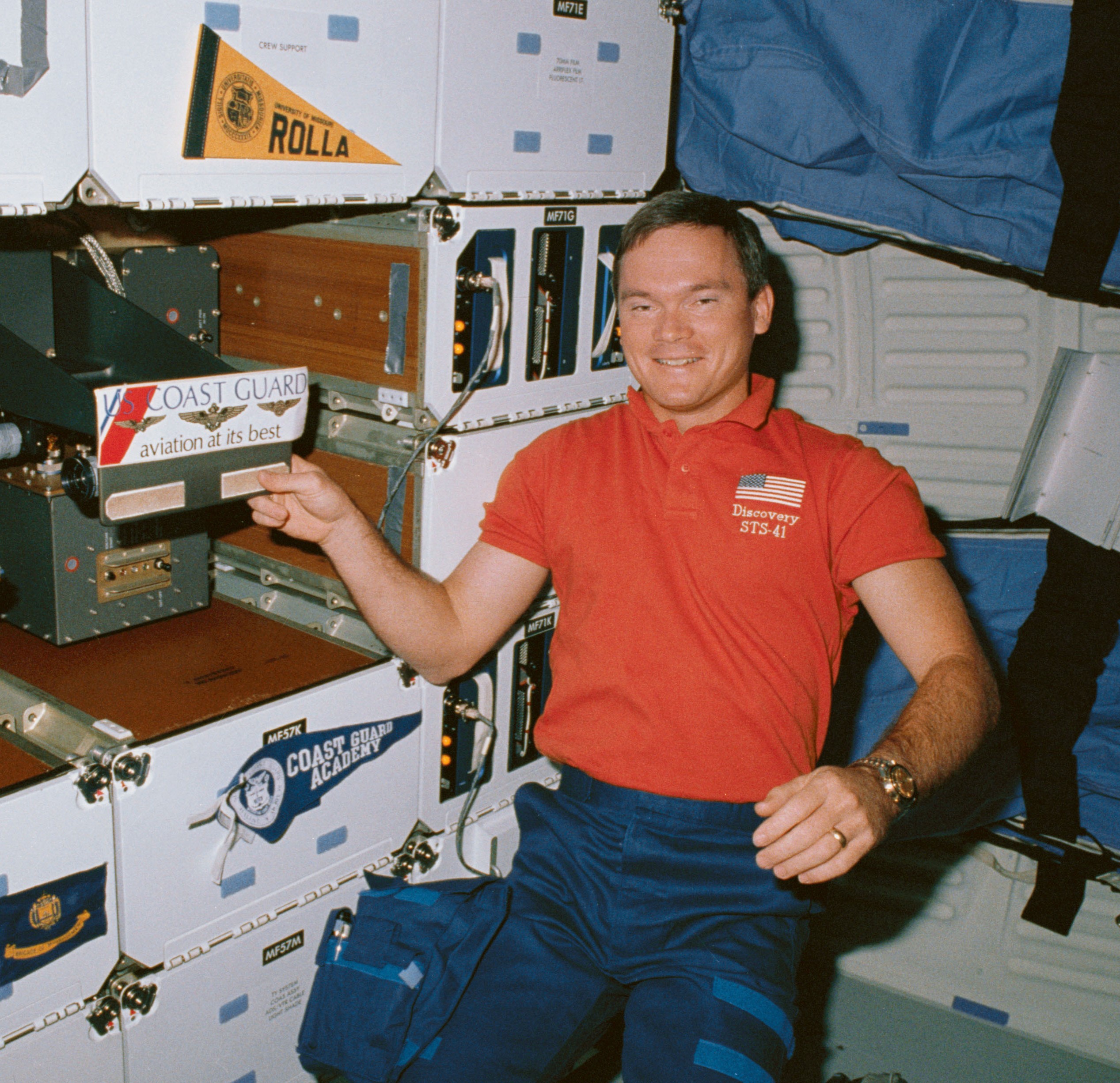
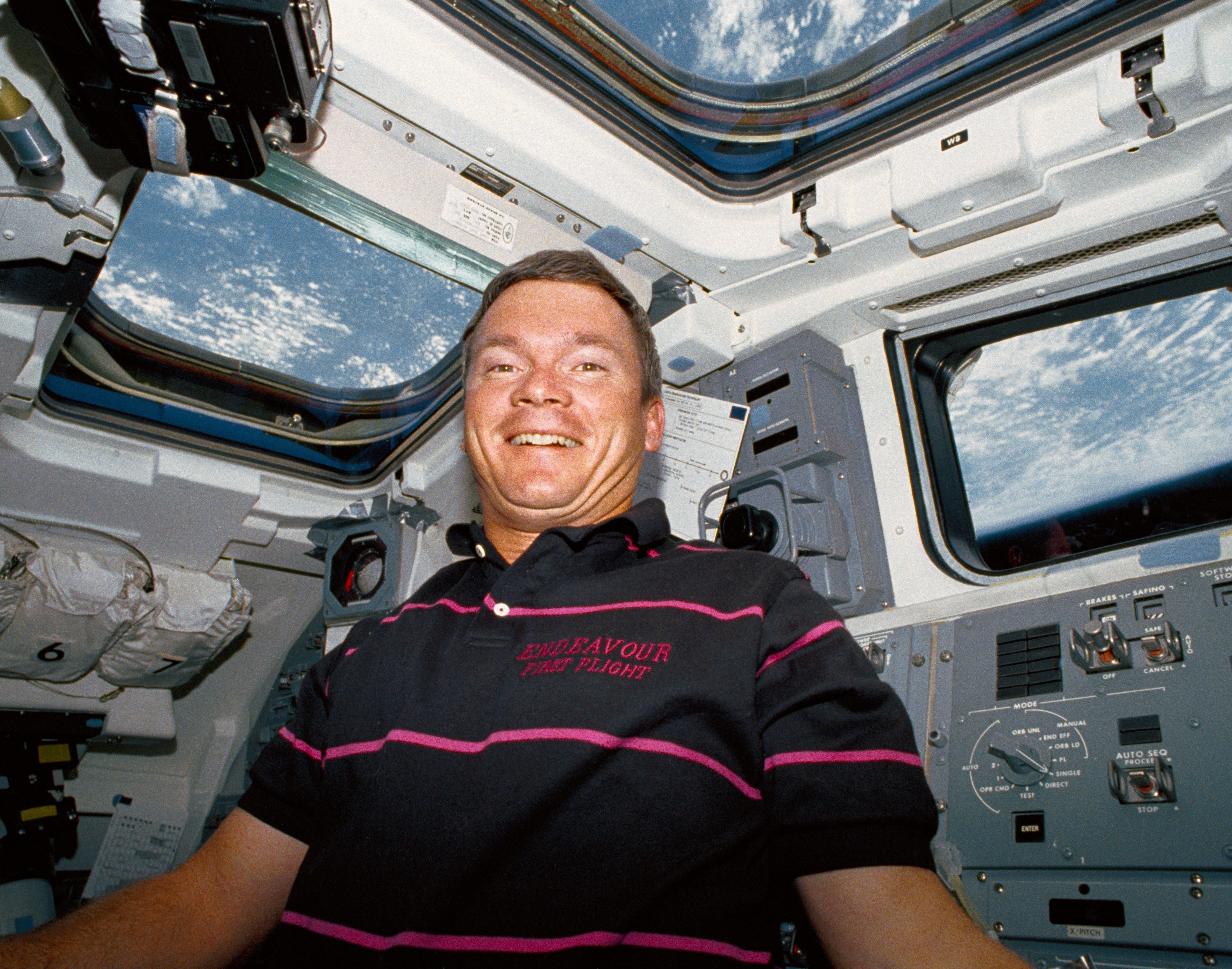
Left: Official astronaut portrait of Bruce E. Melnick, Class of 1987. Middle: Melnick aboard space shuttle Discovery during the STS-41 mission that deployed the Ulysses solar polar probe. Right: Melnick on the flight deck of Endeavour during its first flight, STS-49.
Melnick, a native of Florida, earned a bachelor’s degree in engineering with honors from the U.S. Coast Guard Academy in 1972. During his 20-year career with the U.S. Coast Guard, Melnick’s assignments included serving as operations officer and chief test pilot at the Coast Guard Aircraft Program Office in Grand Prairie, Texas. During his Coast Guard service, Melnick received numerous awards, including two Department of Defense Distinguished Service Medals, two Distinguished Flying Crosses and the Secretary of Transportation Heroism Award. In 1992, he received the U.S. Coast Guard Academy Distinguished Alumni Award. He logged over 5,000 flight hours.. NASA selected Melnick in June 1987 as the first astronaut from the Coast Guard. He completed his training in August 1988, and flew as a mission specialist on Discovery’s STS-41 mission in October 1990. During the four-day flight, he and his crewmates deployed the Ulysses spacecraft to study the Sun’s polar regions. On his second and final spaceflight in May 1992, he served as the flight engineer on STS-49, the first flight of Endeavour. During that mission, the astronauts rescued and repaired the Intelsat VI satellite. He logged more than 300 hours in space. Melnick retired from the U.S. Coast Guard and NASA in July 1992.
Daniel C. Burbank
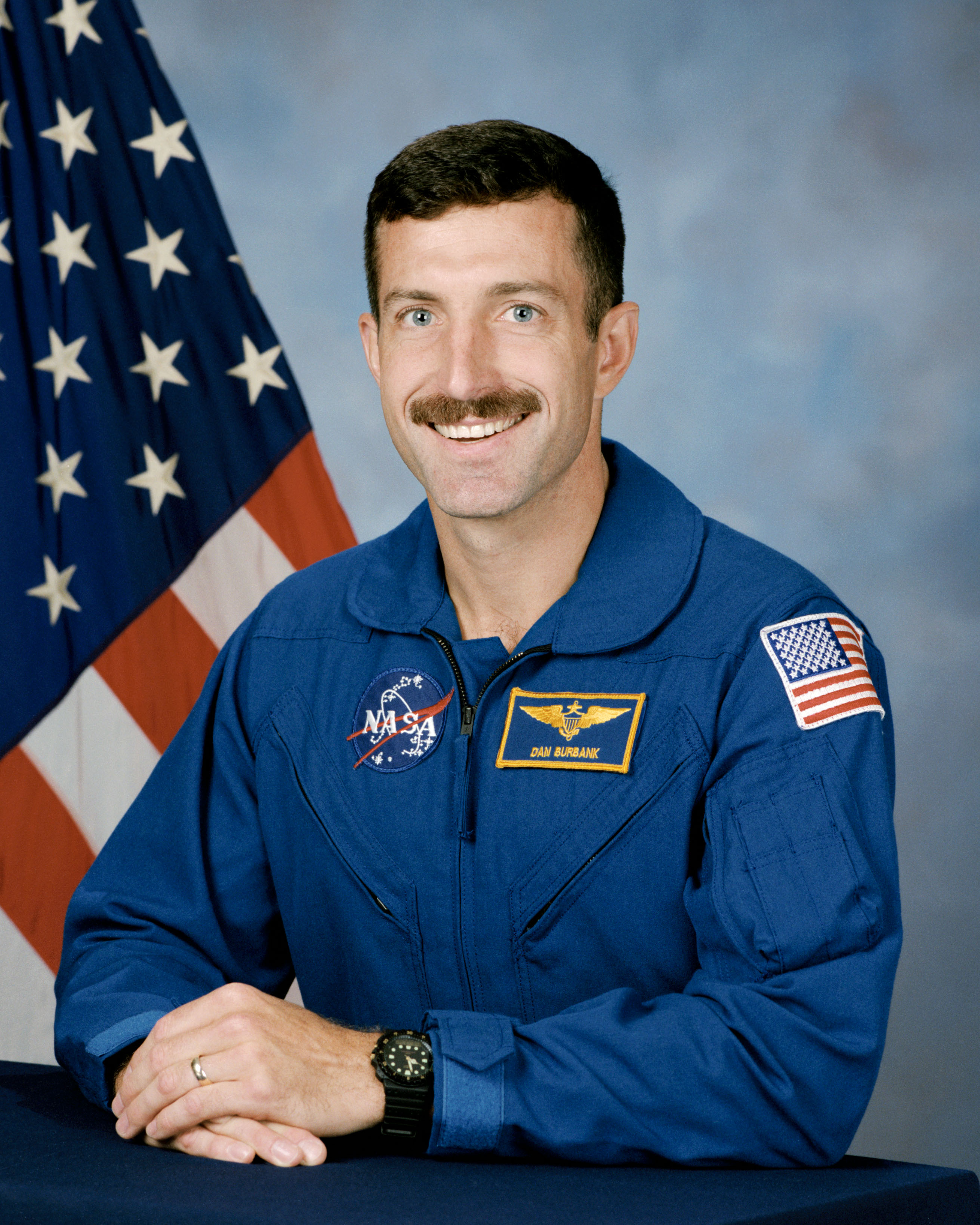
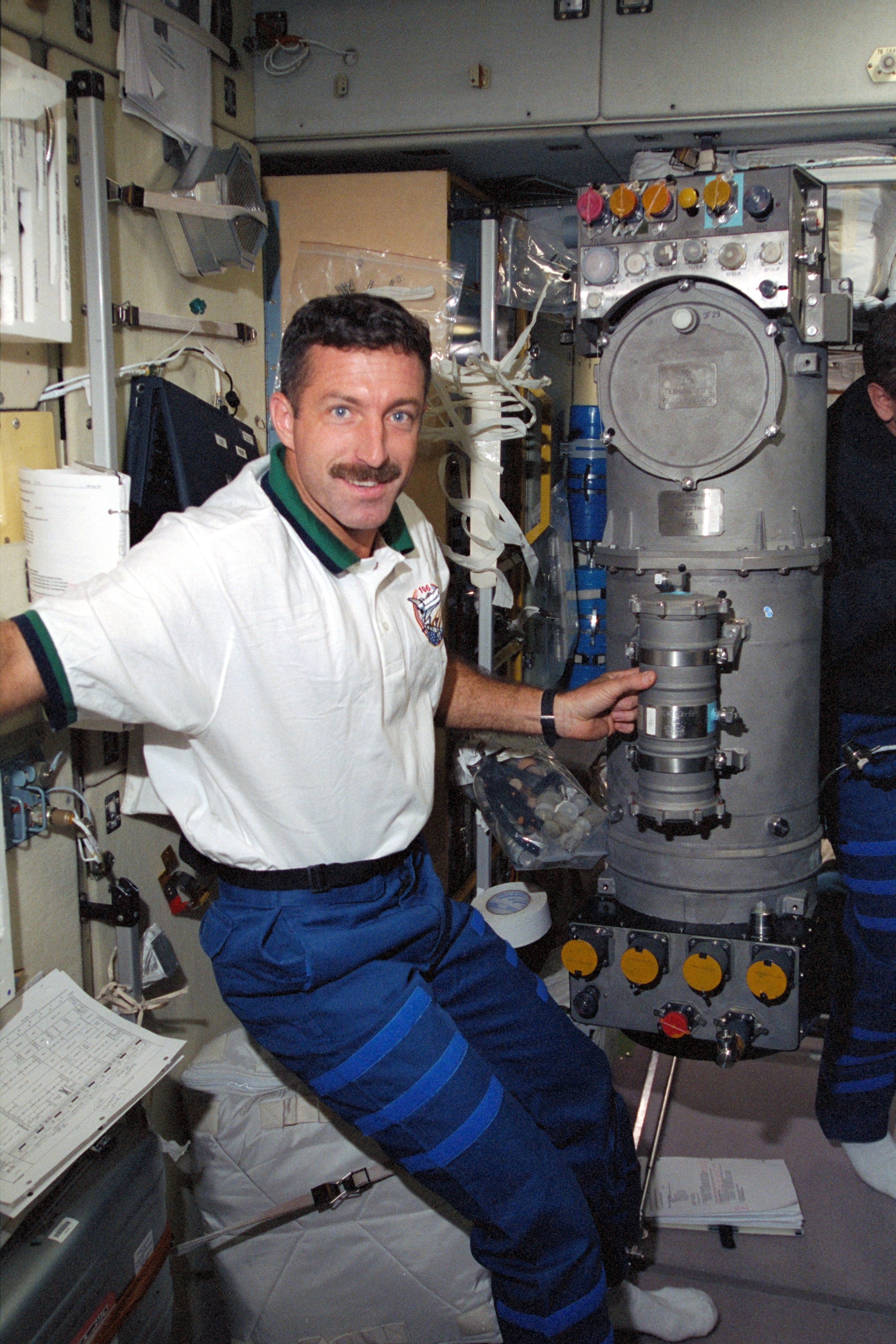
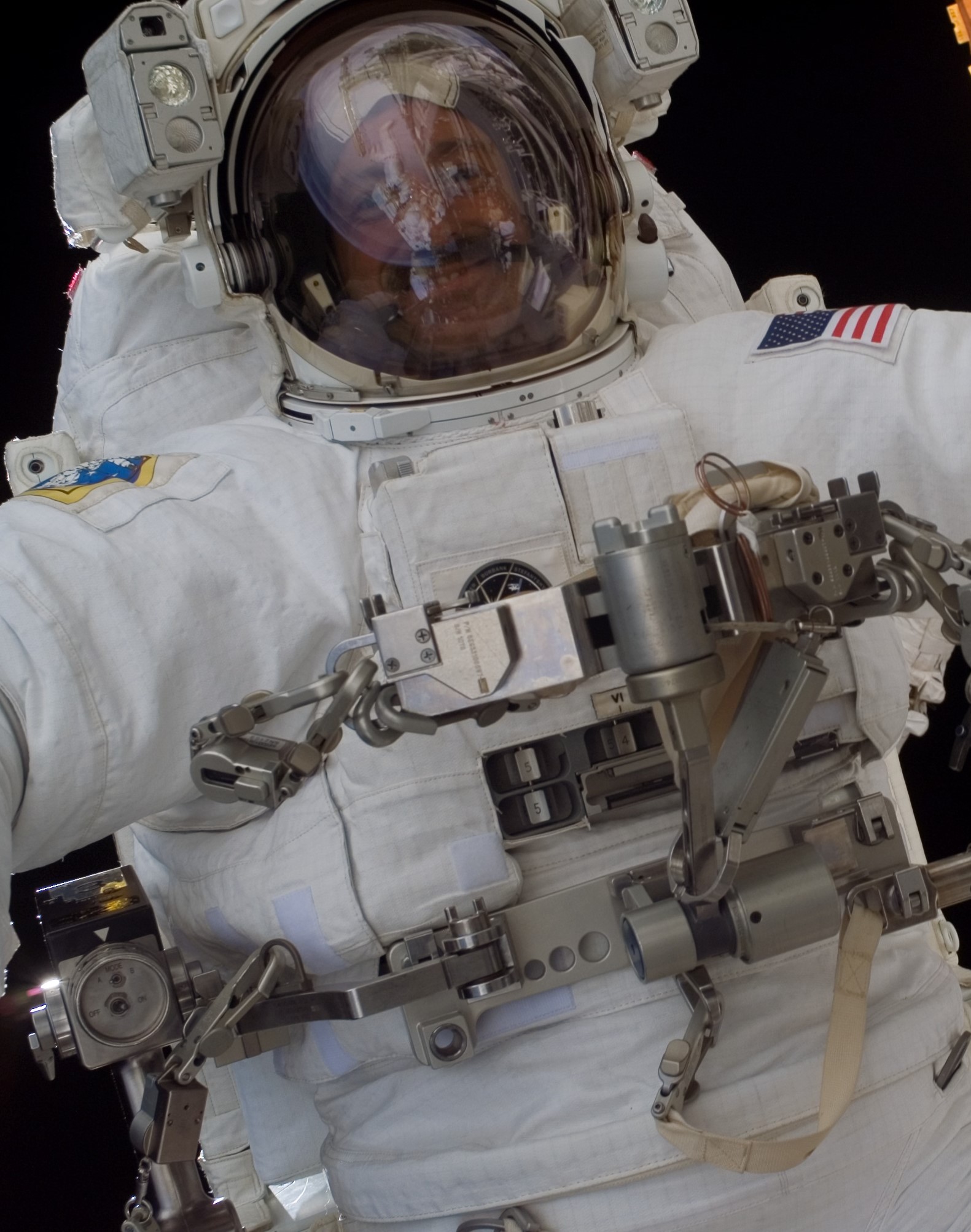

Left: Official astronaut portrait of Daniel C. Burbank, Class of 1996. Middle left: Burbank installs the Elektron oxygen generation unit in the Zvezda Service Module during STS-106. Middle right: Burbank performs a spacewalk during STS-115. Right: Burbank conducts a pulmonary function study while exercising on the bicycle ergometer in the Destiny module during Expedition 30.
Connecticut-born and Massachusetts native, Burbank received a Bachelor of Science degree in electrical engineering and his commission from the U.S. Coast Guard Academy in May 1985. After attending naval flight training in Pensacola, Florida, he was assigned to Coast Guard Air Station Elizabeth City, North Carolina. In July 1992, Burbank transferred to Coast Guard Air Station Cape Cod, Massachusetts, followed by his assignment in May 1995 to Coast Guard Air Station Sitka, Alaska. Burbank logged over 4,000 flight hours, primarily in Coast Guard helicopters, and flew more than 2,000 missions, including over 300 search and rescue missions. NASA selected Burbank as an astronaut in the class of 1996. During his first spaceflight, the 12-day STS-106 International Space Station assembly mission in September 2000, Burbank and his crewmates prepared the station for the arrival of its first expedition crew. They delivered more than three tons of supplies and installed batteries, power converters, oxygen generation equipment, and a treadmill. He flew his second spaceflight aboard Atlantis in September 2006 on the 12-day STS-115 space station assembly mission. The astronauts delivered and installed the P3/P4 truss and solar arrays, and Burbank took part in one the three spacewalks of the mission, spending 7 hours 11 minutes outside. He flew his third and final mission between November 2011 and April 2012 as a member of Expeditions 29 and 30, serving as Commander of Expedition 30. During the 165-day flight, Burbank and his crewmates participated in nearly 200 experiments and completed 23 major hardware upgrades to the station. During his three missions, Burbank accumulated more than 188 days in space. He retired from NASA in June 2018.
Andre Douglas


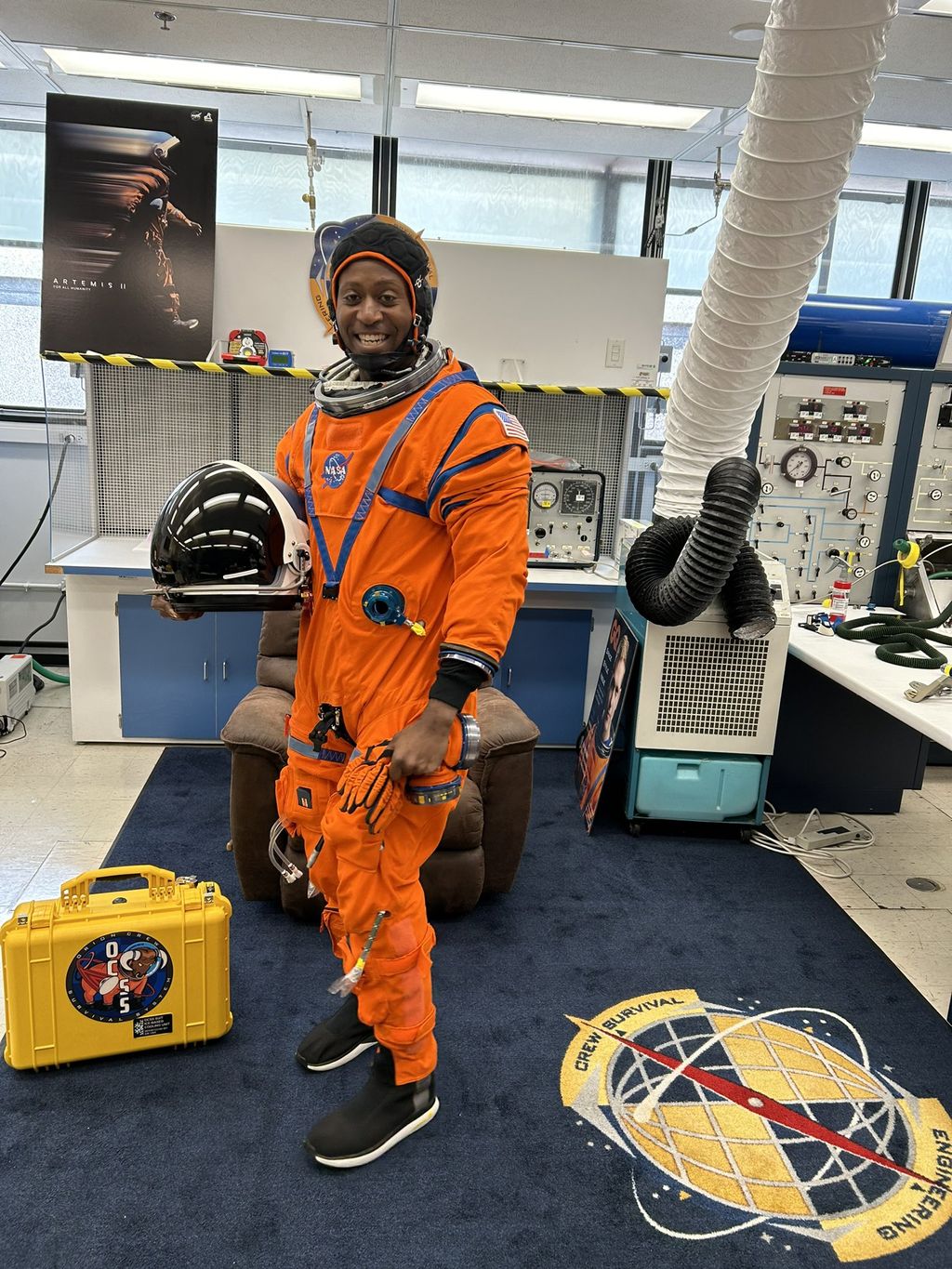
Left: Official astronaut portrait of Andre Douglas, Class of 2021. Middle: Douglas collects soil samples during simulated moonwalks in Northern Arizona in May 2024. Right: Artemis II backup astronaut Douglas tries on his lunar spacesuit in July 2024. Image credit: Courtesy Andre Douglas.
Douglas, a Virginia native and 2008 U.S. Coast Guard Academy graduate, served as an active-duty Coast Guard officer from 2008 to 2015. He earned a master’s degree in mechanical engineering and in naval architecture and marine engineering from the University of Michigan, a master’s degree in electrical and computer engineering from Johns Hopkins University and a doctorate in systems engineering from George Washington University. NASA selected Douglas as an astronaut candidate in December 2021, and he completed his training on March 5, 2024. On March 19, the U.S. Coast Guard swore-in Douglas as a commander in the Coast Guard Reserve during a commissioning ceremony in Washington, D.C. On July 3, 2024, NASA named Douglas as a backup crew member for the Artemis II mission to circle the Moon.
What's Your Reaction?































